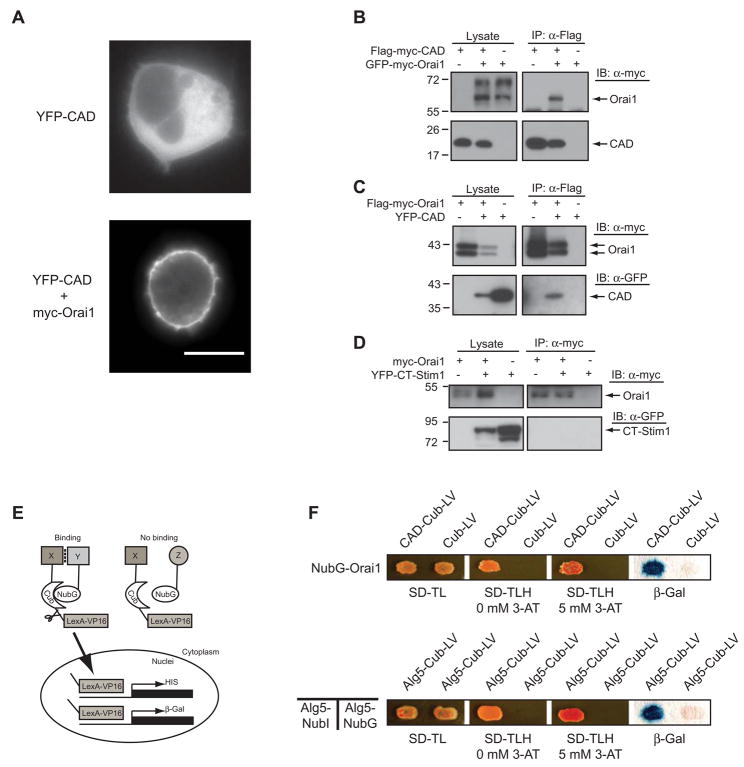Figure 3. CAD Associates with Orai1.
(A) YFP-CAD is cytosolic when expressed by itself in a HEK 293 cell (top), but accumulates at the cell perimeter when coexpressed with Orai1 (bottom). Scale bar, 10 μm. (B, C) Western blots of cell lysates (left) or immunoprecipitated material (right) from cells expressing CAD, Orai1, or CAD + Orai1. Anti-Flag antibodies co-immunoprecipitate GFP-myc-Orai1 with Flag-myc-CAD (B), and co-immunoprecipitate YFP-CAD with Flag-myc-Orai1 (C). (D) CT-STIM1 does not co-immunoprecipitate with myc-Orai1 (representative of 4 experiments). (E) Schematic depiction of the yeast split ubiquitin assay. (F) CAD associates with Orai1 in the split ubiquitin assay. Yeast containing NubG-Orai1 and either Cub-LV alone or CAD-Cub-LV, grow well on plates lacking tryptophan and leucine but containing histidine (SD-TL). Only yeast expressing NubG-Orai1 and CAD-Cub-LV grow on plates lacking all three amino acids (SD-TLH) in the absence or presence of 5 mM 3-aminotriazole (3AT), a competitive HIS3 inhibitor that increases the stringency of selection. Yeast containing CAD-Cub-LV and NubG-Orai1 also activate LacZ whereas cells expressing NubG-Orai1 and Cub do not. The homomeric interaction of Alg5 is shown as a positive control.

